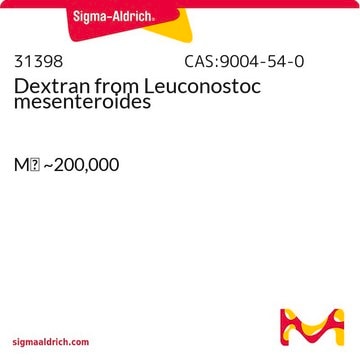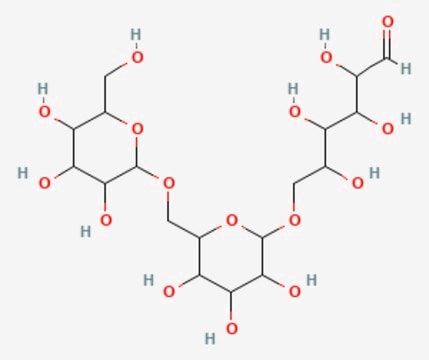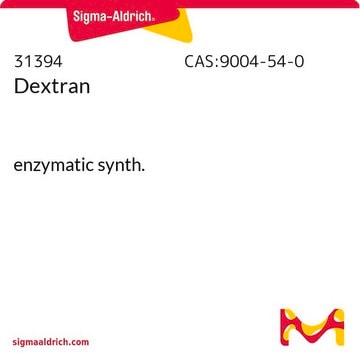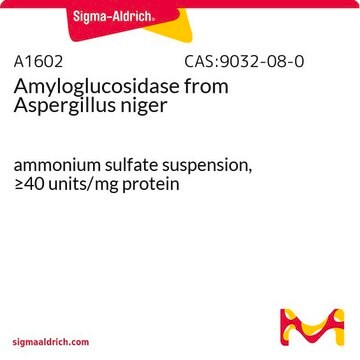D0443
Dextranase from Chaetomium erraticum
Synonym(s):
Dextranase Plus L, 1,6-α-D-Glucan 6-glucanohydrolase
About This Item
Recommended Products
form
solution
storage temp.
2-8°C
Related Categories
General description
Application
- in microcarrier dissolution to produce multicellular 3D spheroids for drug discovery
- in in vitro digestion of extracellular polysaccharide (EPS) from the bacterial isolates
- in a study to investigate the immobilization of dextranase
- to investigate the optimization of process conditions for enzymatic modification of alternan
Biochem/physiol Actions
Preparation Note
Analysis Note
Other Notes
Signal Word
Danger
Hazard Statements
Precautionary Statements
Hazard Classifications
Resp. Sens. 1
Storage Class Code
11 - Combustible Solids
WGK
WGK 1
Flash Point(F)
Not applicable
Flash Point(C)
Not applicable
Personal Protective Equipment
Certificates of Analysis (COA)
Search for Certificates of Analysis (COA) by entering the products Lot/Batch Number. Lot and Batch Numbers can be found on a product’s label following the words ‘Lot’ or ‘Batch’.
Already Own This Product?
Find documentation for the products that you have recently purchased in the Document Library.
Customers Also Viewed
Articles
Uncover more about glycosaminoglycans and proteoglycans including the structure of glycosaminoglycans (GAGs), the different types of GAGs, and their functions.
Uncover more about glycosaminoglycans and proteoglycans including the structure of glycosaminoglycans (GAGs), the different types of GAGs, and their functions.
Uncover more about glycosaminoglycans and proteoglycans including the structure of glycosaminoglycans (GAGs), the different types of GAGs, and their functions.
Uncover more about glycosaminoglycans and proteoglycans including the structure of glycosaminoglycans (GAGs), the different types of GAGs, and their functions.
Our team of scientists has experience in all areas of research including Life Science, Material Science, Chemical Synthesis, Chromatography, Analytical and many others.
Contact Technical Service















